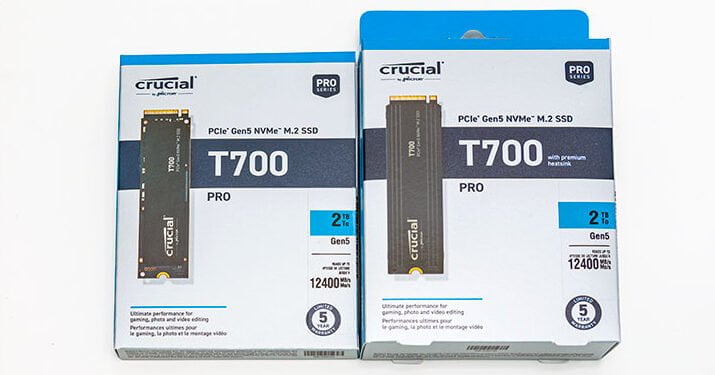
The Phison PS5026-E26, or just ‘E26’ as the cool kids call, is Phison’s first generation PCIe 5.0 x 4 controller that strongly builds upon previous Phison PCIe 4.0 controllers foundation. That is to say it is a “big.LITTLE” 12nm (in TSMC node size nomenclature) design that makes use of ‘big’ ARM Cortex R5 cores and ‘small’ CoXProcessor 2.0 co-processors. Interestingly enough Phison has opted to go back to the E16 processor configuration of two ARM Cortex R5s for the heavy lifting (real time I/O requests) backstopped by three custom CoXProcessor 2.0’s (who handle the behind-the-scenes / non-real time impacting things like TRIM, compression/decompression, flushing the RAM, ECC, garbage handling, etc. etc.) and ignores the E18 configuration of 3 R5s with 2 CoXProcessors.

The reason for this reversion to the E16 days pretty much comes down to wattage and heat output. Bluntly stated the ARM R5 (even in the low 1GHz range) use a lot more power than the CoX 2.0s processor do. So by opting for only two high performance processors Phison was able to let the R5s run faster without running afoul of TDP concerns. Concers well founded and ground in reality. Phison originally designed the E26 around a higher U.3 TDP (~25 watts) their ‘new and improved for M.2’ 14 watt TDP was proven to be problematic when it came time to sell it to SSD manufacturers… as the M.2 PCIe 5.0 port is typically spec’ed with a 15 watt maximum power delivery target. Typically, SSD design teams like to keep to the electrical engineering “80 percent rule” and never go above 80 precent of a theoretical power limit. Considering the controller alone would break this ‘rule’… Phison were forced to tone things down. Typically to the 7 to 10 watt range.

We say ‘range’ as in testing we saw the T700 routinely slurp down about 12.3 to 12.5 watts of power which, given the typical power consumption of NAND, and one RAM IC, puts the E26’s power demand at about 10 watts. All by itself. Many other PCIe 5.0 NVMe designs are using ~10 watts as their total TDP limit and only allowing the E26 to run in the 7 to 8 watt range. They are doing so over concerns of their drive being used in low-end motherboards where the manufacture ‘may’ have cut corners on power delivery to pesky things like the M.2 port.
Basically, Crucial expects their buyers to have a motherboard capable of providing clean, stable power at the real-world limits of the PCIe 5.0 M.2 port. Needless to say, if you have a budget board you may want to opt for a lower power NVMe drive… and you know… give up on the idea of using a motherboard that is cheaper than the NVMe drive you want to pair it with.

To further put this increase in power in proper perspective, the most power hungry PCIe 4.0 Solid State Drives typically used 8 to 8.5 watts (vs. mid-6 range for most). That is 8.5 watts for the controller, RAM, and NAND to share… and they were known for running ‘hot’. As such, while a mere ~4 extra watts of power consumption does not sound like much more it is darn near a doubling of the power available for the controller, with a 50 percent overall increase in heat production versus PCIe 4.0 drives… and about twenty percent increase over what more ‘mundane’ PCIe 5.0 drives are spec’ed at. The up side to this added overhead is simple: the E26 will run faster in the T700 than it will in any other (as of this publication) E26 based SSD. It just may not run in all motherboards. Especially older ‘boards with garbage tier M.2 ports.









